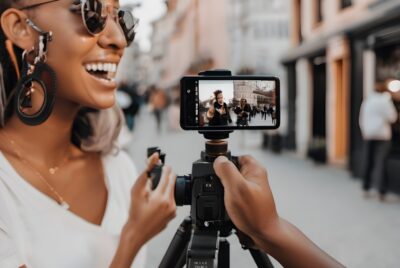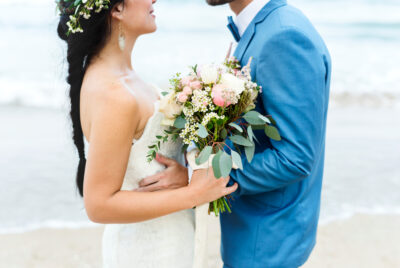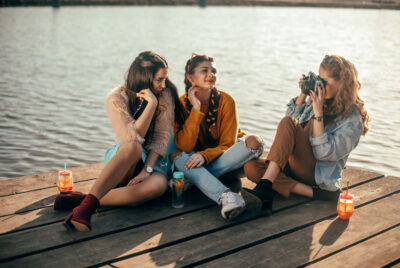Fine Art Photography
Maybe iLet’s talk about a type of photography that’s less about capturing what’s in front of the lens and more about what’s behind it—fine art photography. This is the part of photography where emotion, concept, and self-expression take center stage. As someone who’s navigated the shift from documenting reality to interpreting it, I’d love to guide you through what makes fine art photography truly special and how you can get started on your own journey.
What Is Fine Art Photography?
Defining Fine Art vs. Commercial Photography
Fine art photography is all about expressing a vision, an idea, or an emotion. Unlike commercial photography, which serves a client or a brand, fine art photography serves you, the artist. It’s personal, interpretative, and meant to provoke thought rather than sell a product.
The Role of Vision and Emotion
Your vision is everything here. Whether you’re evoking sadness with shadows or serenity with symmetry, it’s the emotional undercurrent that transforms an image into art.
>> See full range of DSLR camera kits HERE <<
Why Fine Art Photography Matters
Telling Personal Stories Through Imagery
Photography isn’t just about light—it’s about voice. Through fine art photography, you get to tell your story in a deeply visual way. It’s therapy. Maybe it’s memoir. It’s poetry with pixels.
Creating Work That Sparks Thought
Great fine art photography asks questions, not just provides answers. It makes the viewer pause, lean in, and wonder, “What’s the story here?”
The Mindset of a Fine Art Photographer
Thinking Beyond Aesthetics
Pretty doesn’t always mean powerful. The mindset shift in fine art comes when you stop trying to make something look good and start focusing on making it feel meaningful.
Conceptualization Before Creation
Fine art photographers often sketch ideas, write notes, and build mood boards before even picking up the camera. The image is crafted in the mind first—then executed with intention.
Building a Cohesive Body of Work
Working in Series
Rather than scattered one-off images, fine art photographers tend to create series. These are collections of photos tied together by a common theme, subject, or message.
Consistency in Style and Message
Ever scrolled an Instagram feed where every photo feels like part of a story? That’s consistency. Stick with a visual language—color palette, lighting, tone—that reflects your voice.
Choosing Your Subject Matter
Drawing from Personal Experiences
The most powerful work often comes from personal pain, joy, or reflection. When I started incorporating personal narratives into my photography, the work became magnetic—both for me and for viewers.
Exploring Social, Emotional, or Philosophical Themes
Don’t be afraid to dig deep. Fine art is a great vehicle to explore identity, mental health, time, consumerism, you name it.
Developing a Signature Style
Finding Inspiration, Not Imitation
Yes, look at the masters—Cindy Sherman, Gregory Crewdson, Fan Ho—but don’t copy. Let them influence your direction, not your destination.
Techniques That Define You
Maybe you shoot only in fog or you do monochromes with bold contrast or you use motion blur for dream-like effects. Whatever it is, lean into it until people start recognizing your work without seeing your name.
Fine Art Photography Techniques
Composition and Minimalism
Less can truly be more. Fine art thrives on clean, deliberate compositions that leave space for the concept to breathe.
Post-Processing as a Creative Tool
Editing isn’t cheating—it’s storytelling. Color grading, texture overlays, or even compositing can elevate an idea from good to unforgettable.
>> See full range of DSLR camera kits HERE <<
Printing and Presentation
Choosing the Right Medium
Matte paper for softness, glossy for sharpness, canvas for warmth—your choice of print medium adds its own emotion to your work.
Framing and Display Considerations
Presentation matters. A poorly framed print can kill the impact. Choose frames that support—not distract from—your vision.
Entering the Fine Art Market
Galleries and Exhibitions
Start small. Local galleries and open calls are great entry points. Don’t be discouraged by rejection—it’s part of the game.
Selling Prints and Licensing Work
Once you’ve built some recognition, consider selling limited edition prints or licensing through platforms like Saatchi Art or Artsy.
Building Your Portfolio
Online vs. Physical Portfolios
Have both. A clean, well-organized website is crucial, but a printed portfolio book adds a tactile charm at in-person reviews.
Writing an Artist Statement
This is your elevator pitch in text form. Explain your themes, your process, and what drives your work—without sounding like a robot.
Sharing Your Work
Using Social Media with Purpose
Don’t just post for likes. Use platforms like Instagram or Behance to tell your story and build connections with other artists.
Connecting with Art Communities
Join photography collectives, critique groups, or local clubs. The feedback and exposure can be invaluable.
Mistakes to Avoid in Fine Art Photography
Prioritizing Trends Over Vision
Trends fade. Your vision is timeless. Stay true to your voice even when the algorithm begs you to conform.
Neglecting Storytelling
Without a message or mood, your photo is just another pretty picture. Always ask: What am I trying to say with this?
Resources for Aspiring Fine Art Photographers
-
Books: “On Photography” by Susan Sontag, “Camera Lucida” by Roland Barthes
-
Courses: CreativeLive’s Fine Art Photography classes
-
Communities: LensCulture, Feature Shoot, PhotoVogue
Conclusion
Fine art photography isn’t about having the best gear or the most followers—it’s about honesty. It’s about exploring what matters to you and using your camera to reflect that back to the world. If you’ve got something to say, say it through your lens. Start small, stay consistent, and remember: your art, your rules.
>> See full range of DSLR camera kits HERE <<
FAQs
1. Can I be a fine art photographer without a degree in art?
Absolutely. Your vision and consistency matter more than formal education. Plenty of self-taught artists thrive in this space.
2. What kind of camera do I need for fine art photography?
Anything from a DSLR to a smartphone will do. It’s not about gear—it’s about concept and execution.
3. How do I price my fine art prints?
Start by researching similar artists. Consider your experience, edition size, and materials used. Be realistic but don’t undersell yourself.
4. Should I enter photo competitions?
Yes, but be selective. Choose contests that align with your work and offer real exposure or constructive feedback.
5. Is black-and-white more “artsy” than color?
Not necessarily. Both have artistic merit. Choose what serves your concept best.
Further reading
Check out our other relevant articles:
Here are two educational resources that complement the insights shared in the article on fine art photography:
1. Fine Art Photography: A Beginner’s Guide – Adobe
This comprehensive guide from Adobe explores fine art photography as an art form, offering beginner tips from expert photographers. It delves into the importance of expressing ideas and emotions through imagery, the significance of high-quality prints, and how to view your work beyond digital screens. It’s an excellent starting point for those new to the genre, providing practical advice to build a strong foundation in fine art photography.
2. Fine Art Photography: The Complete Guide with Brooke Shaden – CreativeLive
In this in-depth course, renowned fine art photographer Brooke Shaden teaches creative exercises to develop your ideas, how to create an original narrative, produce your own photo series, and master post-production techniques. She also covers writing about your work, pitching to galleries and agents, and printing your pieces to present them as art. This resource is invaluable for photographers aiming to deepen their understanding and practice of fine art photography.
These resources offer additional perspectives and practical guidance to enhance your journey into fine art photography.




